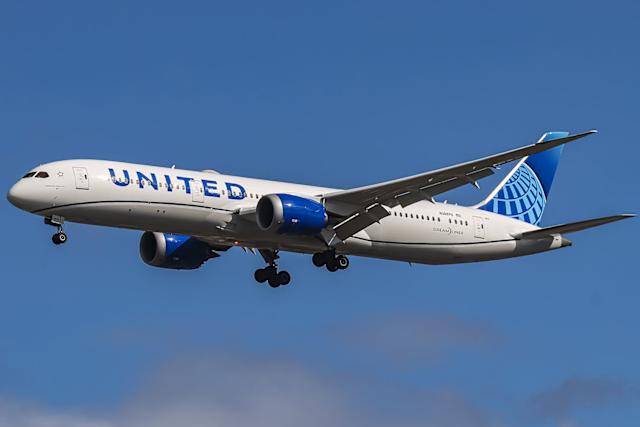
On Wednesday evening, aviation officials confirmed that a United Airlines plane carrying approximately 50 passengers experienced a runway incident upon landing at Roanoke-Blacksburg Regional Airport in Virginia. The aircraft, a regional jet operating under United’s Express service, veered off the paved surface shortly after touchdown, coming to a stop in the runway safety area. Fortunately, no injuries were reported among the passengers or crew.
Authorities say the safety system in place at the airport, specifically designed to mitigate such situations, functioned exactly as intended. The system, commonly referred to as an Engineered Materials Arresting System (EMAS), is built at the end of certain runways to help stop an aircraft that overshoots or veers off its designated path. By using materials that rapidly decelerate the landing gear without damaging the plane, the EMAS prevented what could have been a more serious accident.
According to preliminary accounts, the United Express flight had departed from Washington Dulles International Airport earlier in the day and was scheduled for a routine landing in Roanoke. Weather conditions at the time were reported as overcast but not severe, with no immediate indicators of thunderstorms or extreme winds. Passengers onboard described the approach as slightly rough but otherwise typical until the moment the wheels touched down.
Several passengers later recounted feeling a sudden jolt as the aircraft appeared to skid and then veer off the paved surface. “We felt a bump and then this unusual braking sensation. It got quiet, and you could feel the plane slowing quickly, but not in the usual way,” one passenger told local reporters. Flight attendants reportedly instructed passengers to remain calm and seated as the aircraft came to a complete stop.
Emergency response teams at Roanoke-Blacksburg Regional Airport were immediately dispatched to the scene, as is protocol whenever a runway excursion occurs. Fire trucks and airport safety vehicles surrounded the aircraft within minutes, though their services were ultimately not needed beyond precautionary checks. Passengers were escorted safely off the plane via portable stairs and transported by bus to the terminal.
Officials from United Airlines released a brief statement shortly after the event, emphasizing that safety remained their top priority. The airline confirmed that all passengers and crew were unharmed and that arrangements were being made to assist travelers with their continued journeys. “We are grateful for the quick response from airport personnel and for the patience of our customers,” the statement read.
Roanoke-Blacksburg Regional Airport temporarily suspended operations on the affected runway while crews inspected the area and ensured it was safe for other aircraft. Normal operations resumed within a few hours, though some inbound and outbound flights experienced short delays. Airport officials reassured the public that the incident posed no ongoing safety threat.
The Federal Aviation Administration (FAA) and the National Transportation Safety Board (NTSB) have both launched investigations into the cause of the incident. Preliminary reports suggest that the runway surface was not compromised, and weather conditions were not severe enough to directly explain the runway excursion. Investigators will examine factors such as aircraft speed, braking systems, pilot input, and potential mechanical issues.
Runway excursions, while rare, remain one of the most common categories of aviation incidents worldwide. They can result from various factors, including pilot error, weather conditions, or mechanical malfunctions. In this case, officials are particularly interested in understanding why the aircraft veered off course and whether the incident was related to performance issues during landing.
For the travelers onboard, relief was the overwhelming emotion once they realized the situation had ended safely. One passenger described the moments after the plane came to a stop: “There was a hush, then people started to realize we were fine. You could see the emergency vehicles around us, but nobody was panicking. The crew did a great job keeping us calm.”
Some passengers expressed gratitude for the safety systems in place at smaller airports like Roanoke’s. “I’d never heard of a system like that before,” another passenger said, referring to the EMAS. “Now I know it can really make the difference in situations like this.”
Aviation experts note that incidents such as this highlight the importance of layered safety systems within the airline industry. While runway excursions can be dangerous, the presence of EMAS beds has proven to save lives and prevent significant damage in numerous cases over the last two decades. The FAA continues to expand the use of EMAS technology at airports across the United States, especially those with shorter runways or limited surrounding terrain.
Though unnerving for the passengers and crew involved, officials emphasize that commercial aviation remains one of the safest forms of travel. Events like the Roanoke incident are thoroughly investigated to ensure lessons are learned and improvements are made where necessary.
As the NTSB begins its inquiry, the aircraft involved will undergo a comprehensive inspection to determine if any mechanical issues played a role. Findings from the investigation are expected in the coming months, though a preliminary report will likely be released sooner.
For now, officials and passengers alike are expressing gratitude that what could have been a dangerous accident ended without injuries. The quick response by airport personnel and the successful activation of the runway safety system ensured that all 50 people on board walked away unharmed, underscoring the resilience of modern aviation safety standards.